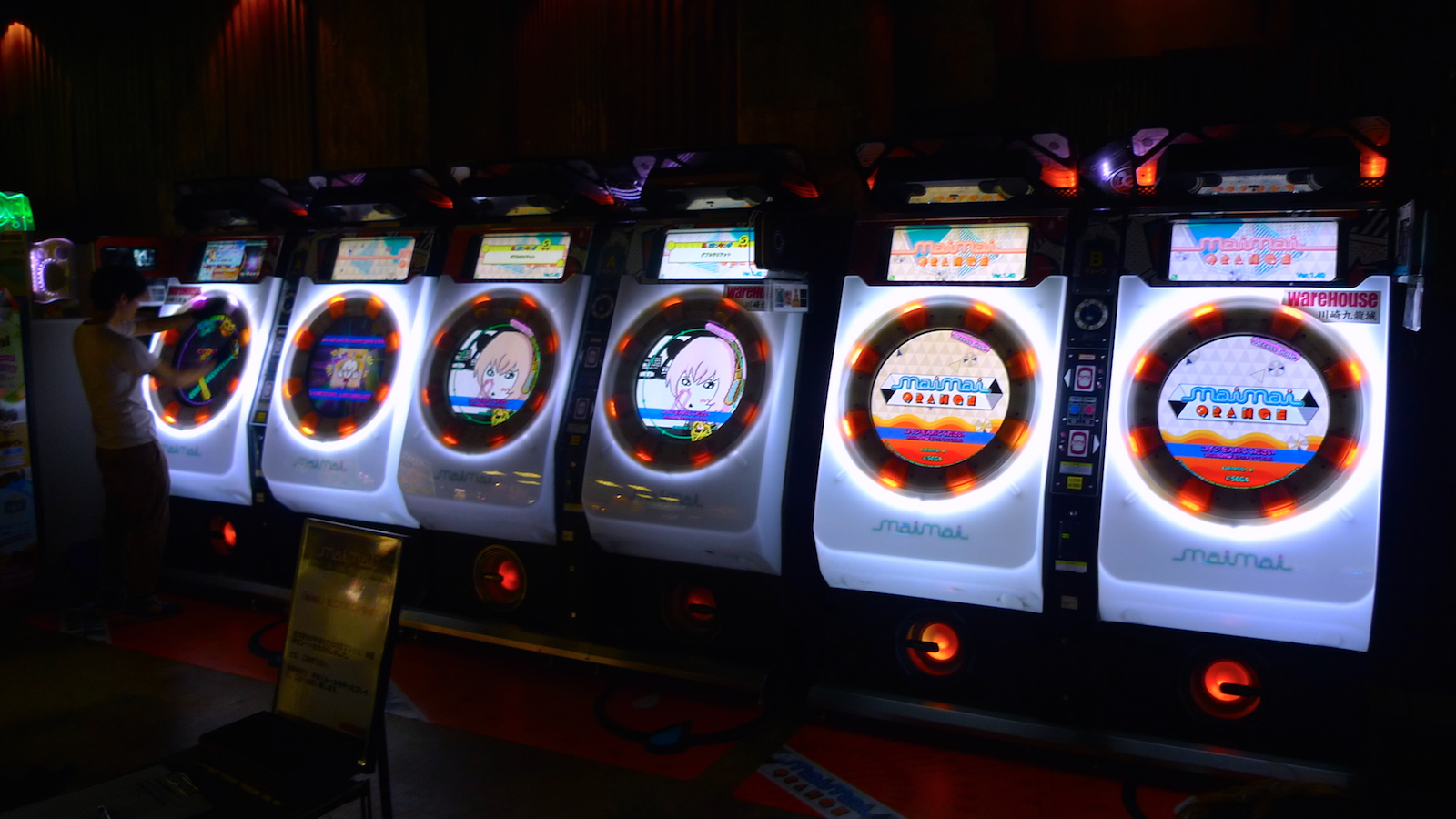Tokyo Game Centre #01: maimai ORANGE

This is a new series, “Postcards from the game centre” (that’s what the Japanese says) collected in Tokyo over the summer. [EDIT: The title used to be Japanese: ゲームセンターからのはがき. As much as that felt like a good expression of myself on returning from my old home of Tokyo, I realised I was excluding probably 100% of my small readership with a load of nonsense symbols. And although I used the Japanese in all earnestness, it of course looked very, very pretentious.]
Cool pictures of games to brighten up our Mondays, maybe with a little background or some snippets of Japanese arcade culture. I reckon I have enough to take us right through the winter.
maimai ORANGE
ORANGE is the latest version of Sega’s maimai series which launched in 2012. It’s a rhythm action game played by touching eight illuminated targets surrounding a circular screen. If you’re wondering how it works, let me explain:
Just kidding — that’s Sega’s explanation of the song select screen. The game plays a bit like a mixture of Osu! Tatakae! Ouendan and Para Para Paradise. You know, stuff lights up and you move in time with the music.
A modern Japanese arcade cabinet
Sega seems to be totally on the ball with the Japanese arcade scene in this cabinet. One part of that scene is social: at my game centre’s maimais I saw a group of kids hanging out together, sometimes watching, sometimes playing side by side, and they killed a couple of hours like that. In another I saw a young couple play guitar and drums together in a Rock Band-like setup on separate little stages for an hour or so.
Around the corner from maimai was the other side of the culture. A guy was playing DDR on his own, perfecting all the hardest songs, with three bottles of ice water and a towel on the table behind him. (And a blindfold Taiko: Drum Master guy will show up in a later postcard…)
Mix those two sides of arcade rhythm action gaming together — the social and the obsessive — and you’ll see how smart Sega is being with maimai ORANGE. First of all, the machines are always in groups — the row of six above is actually three fixed pairs — so you can always play with friends or meet other players. On top of that, inserting a card into the machine (which is common for regular players of many games in Japan) allows you to record your performance, register your high scores, and share the scores and recordings online.
And this is not a half-arsed feature: the cabinet captures video of the main (circular) screen, the top (rectangular) screen with its status indicator, and the player, all from a well-positioned in-cabinet camera. The result is absolutely fantastic. Check out this guy getting a score just over 100%, which I presume is good.
Some interesting details
Two notes to finish: first, see that the cab in the video has a label at the top-right (なんばヒルズ), and the ones in my picture have a different label in that spot (WAREHOUSE). These are the names of the game centres where the cabs are located, strategically sticking their names right under the camera so they get seen in the videos. You can just about distinguish the square camera protrusions in my picture, too, above those stickers.
Finally, all the players I saw hanging out at this machine were wearing gloves, just like the guy in the video. A product opportunity? You bet. Here are the “maimai premium smartphone-compatible gloves” on Sega’s site. Knitted by maimai-chan, I believe it says.
So that’s maimai ORANGE. Find another postcard here next Monday. It’s going to be a less modern cabinet — by about 30 years.
(See all postcards from the game centre here.)
🎮💡
Photographer and writer covering Tokyo arcade life – the videogames, the metropolis and the people



